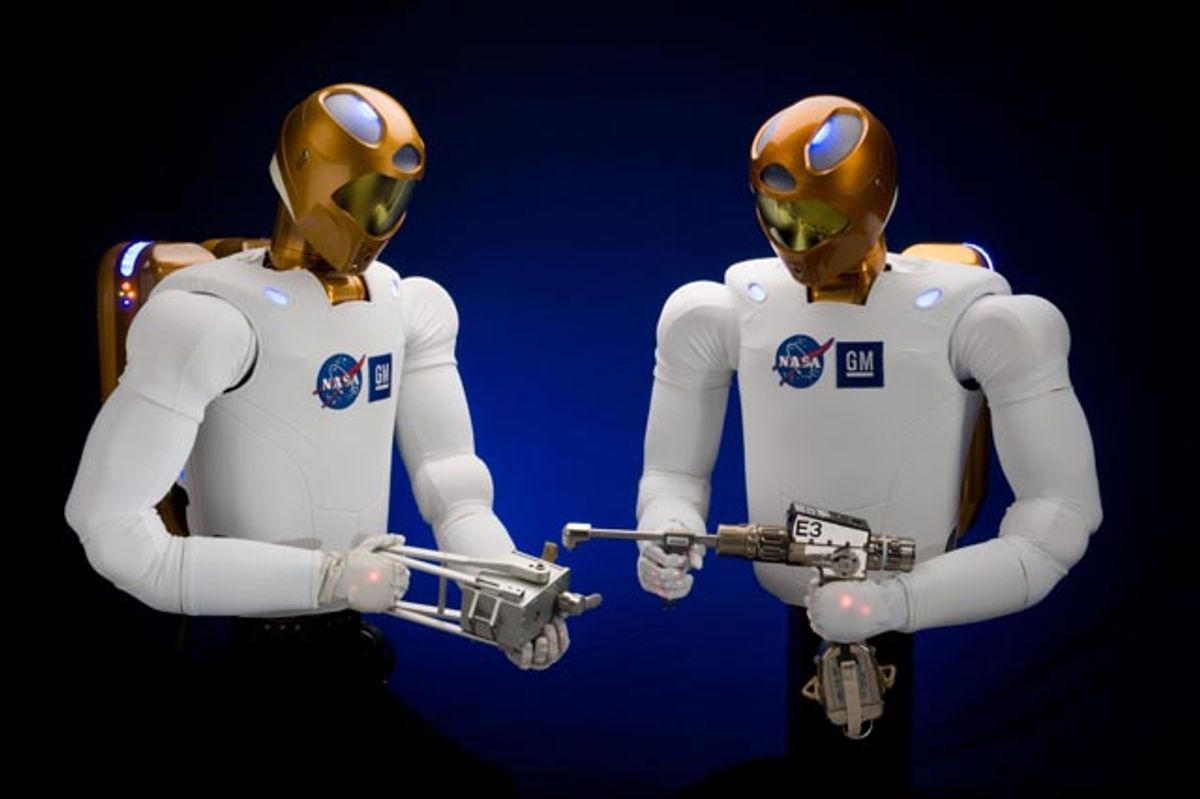NASA and General Motors have unveiled a humanoid robot called Robonaut2, or R2, that they say will be able to "assist astronauts during hazardous space missions and help GM build safer cars and plants."
The R2 is based on the original Robonaut created by NASA and Darpa a decade ago [see photo, right]. It was a fairly advanced android for its time, but it never travel to space.
UPDATE: Popular Mechanics has more technical details and specs:
The biggest upgrades from the original Robonaut are R2's thumb, which now have four degrees of freedom (as opposed to three), and its overall speed, which have improved by a factor of four. One result of all of this engineering is the kind of breakthrough only a roboticist would swoon over: R2 can use both hands to work with a piece of flexible material. If that sounds simple, consider the amount of sensory data, cognitive processing and physical dexterity needed to manipulate something that flows and bends in your fingers. In the series of baby steps that comprises robotics, R2 is leaping.
Still, the two existing R2 prototypes are still essentially legless—GM has no need for a bipedal robot awkwardly swaying through its plants, and NASA plans to fit the robot with at least as many mobility platforms as its predecessor. R2's lower half is intended to be modular, and so is its redesigned head, which could fit a variety of sensor suites, depending on the mission or environment. Of course, until the agency's budget is sorted out, [Robonaut2 project manager Myron Diftler] can't confirm what those missions will be, or when the robot could be deployed. Which means the robot, or some version of it, is more likely to show up in a GM plant before leaving the planet.
See the new Robonaut2 in action in the video below:
Photos and videos: NASA
Erico Guizzo is the Director of Digital Innovation at IEEE Spectrum, and cofounder of the IEEE Robots Guide, an award-winning interactive site about robotics. He oversees the operation, integration, and new feature development for all digital properties and platforms, including the Spectrum website, newsletters, CMS, editorial workflow systems, and analytics and AI tools. An IEEE Member, he is an electrical engineer by training and has a master’s degree in science writing from MIT.





